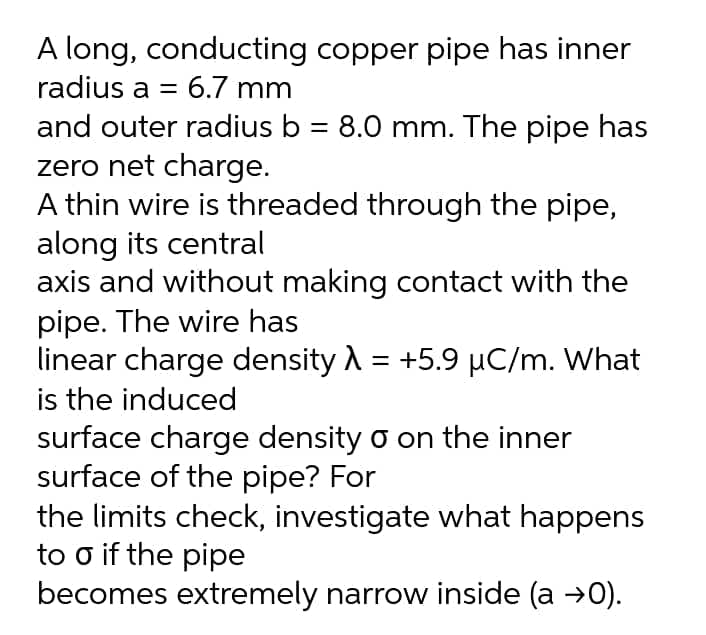A long, conducting copper pipe has inner radius a = 6.7 mm and outer radius b = 8.0 mm. The pipe has zero net charge. A thin wire is threaded through the pipe, along its central axis and without making contact with the pipe. The wire has linear charge density A = +5.9 µC/m. What is the induced surface charge density o on the inner surface of the pipe? For the limits check, investigate what happens to o if the pipe becomes extremely narrow inside (a →0).
A long, conducting copper pipe has inner radius a = 6.7 mm and outer radius b = 8.0 mm. The pipe has zero net charge. A thin wire is threaded through the pipe, along its central axis and without making contact with the pipe. The wire has linear charge density A = +5.9 µC/m. What is the induced surface charge density o on the inner surface of the pipe? For the limits check, investigate what happens to o if the pipe becomes extremely narrow inside (a →0).
Related questions
Question

Transcribed Image Text:A long, conducting copper pipe has inner
radius a = 6.7 mm
and outer radius b = 8.0 mm. The pipe has
zero net charge.
A thin wire is threaded through the pipe,
along its central
axis and without making contact with the
pipe. The wire has
linear charge density A = +5.9 µC/m. What
is the induced
surface charge density o on the inner
surface of the pipe? For
the limits check, investigate what happens
to o if the pipe
becomes extremely narrow inside (a →0).
Expert Solution
This question has been solved!
Explore an expertly crafted, step-by-step solution for a thorough understanding of key concepts.
This is a popular solution!
Trending now
This is a popular solution!
Step by step
Solved in 2 steps with 2 images
